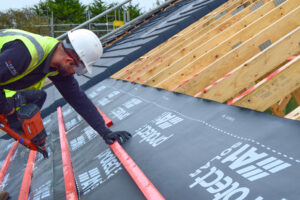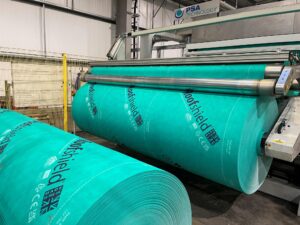3 mins

Working at Height APPG recommends better reporting and a change in culture to improve falls from height statistics.

March 2019 saw the publication of Staying Alive: Preventing Serious Injury and Fatalities while Working at Height by the Working at Height All-Party Parliamentary Group (APPG), a year after its launch.
The Work at Height Regulations 2005 apply to all work where there might be a risk of a fall liable to cause personal injury.
Since the introduction of the regulations, the UK has consistently had some of the lowest workplace fatality and serious injury rates in the European Union. In 2014, the UK had 0.55 fatalities per 100,000 employees, compared to similar industrial countries like France (3.14) and Germany (0.81).
However, data from the Health and Safety Executive (HSE) published in 2017 found that 18 per cent of those who died at work did so as a result of a fall from height. In fact, the statistics pointed to fall from height as being the most common cause of fatal injury of workers in the past five years, with just under half of those fatalities (19 per year on average) happening within the construction sector.
For those who experience non-fatal accidents, a fall can lead to life-changing injuries and affect not just the victim but also their family, friends and colleagues. The inquiry, launched in January 2018, received over 60 responses from diverse sectors of the UK economy, including from the NFRC.
The majority of the respondents believed that the principle of the Work at Height Regulations 2005 was broadly fit-for-purpose, however the interpretation and application of the legislation was varied.
In response to the submissions received and to the oral evidence sessions held in March and July 2018, the APPG has now set out suggestions that it hopes foster genuine improvements to the work at height sector. These suggestions have been divided into recommendations and areas the APPG would like to consult further on.
Recommendations
- Introduce enhanced reporting without an additional burden, through RIDDOR, which at a minimum, records the scale of a fall, the method used and the circumstances of the fall.
- Appoint an independent body that allows confidential, enhanced and digital reporting of all near misses and accidents that do not qualify for RIDDOR reporting. The data collected will be shared with government and industry to inform health and safety policy.
- Extend the Working Well Together—Working Well at Height safety campaigns to industries outside of the construction sector.
- Extend Scotland’s Fatal Accident Inquiry process to the rest of the UK.
For further consultation
- Create a digital technology strategy, to include a new tax relief for small, micro and sole traders, to enable them to invest in new technology.
- A major review of work at height culture. This should include an investigation into the suitability of legally binding financial penalties in health and safety, funds which could be used towards raising awareness and training, particularly in hard to reach sectors.



